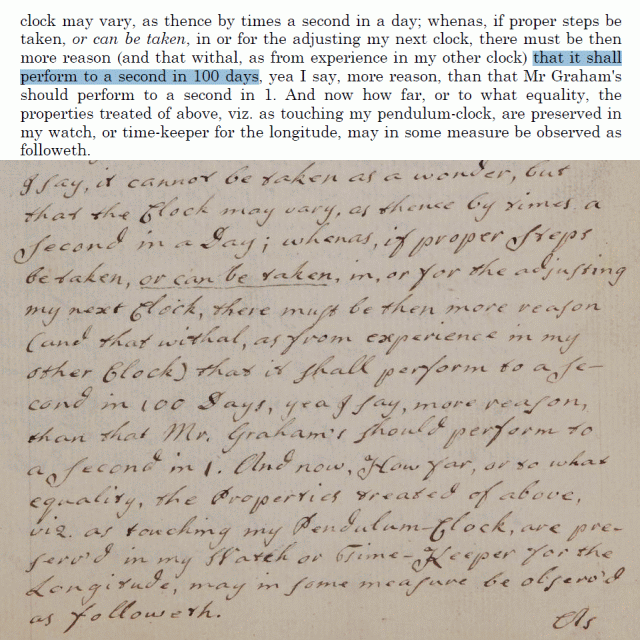LeapSecond.com
Harrison / Burgess Clock B
19-Apr-2015
Introduction
The Martin Burgess "Clock B" was in the news this week as it completed a 100-day trial.
During that entire time it stayed accurate to within 1 second.
This is more accurate than any quartz wristwatch, an impressive feat for a mechanical pendulum clock.
What's even more amazing is that this is an open air pendulum clock.
In the past, extremely high performance was only possible with pendulum clocks in sealed vacuum chambers.
The stunning performance is attributed to Martin Burgess' decision to follow exactly an unusual design
by John Harrison, a design which dates back 250 years ago!
Burgess Clock "B" background information
UK press links
Technical links
Note that 1 second in 100 days of time error implies a mean frequency accuracy of
1 / (86400*100), about 1×10-7, or 0.1 PPM.
While it is not unheard of for a dedicated person to design, build, and adjust
a well-constructed mechanical timekeeper to 1 ppm or even 0.1 ppm,
having it remain accurate to this level –
over the duration of many months,
and while exposed to normal air temperature, humidity, and pressure variations
– is an extreme accomplishment.
A Second in 100 Days
Where does the 1 second in 100 days number come from?
In Harrison's 1775 book, "Concerning Such Mechanism",
he makes the bold claim that a pendulum clock could be made so accurate that
"it shall perform to a second in 100 days".
Below is a paragraph from the 240 year old document:
Return to LeapSecond.com home page.
Comments/questions to tvb.

